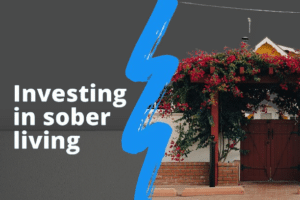In the context of addiction recovery, sober living homes constitute a vital component where recoverees can be welcomed into a supportive community to help them ease back into everyday life. If you plan to begin a sober living business, a good business plan is indispensable to a successful undertaking. This guide will show you how to include the essential components of your business plan to make it effective.
Understanding the Sober Living Industry

Before you step into the specifics of your business plan, having a good background in due diligence in a sober living business is of utmost importance. The sobriety house program is a highly structured and supervised environment that has the goal of providing recovering persons from drug abuse with necessary support and care. These shelters are secure places where residents can concentrate on their healing and learning primary life skills while creating a trust network.
Market Analysis
A detailed market analysis will help you find your target market, learn about the demand for sober living services in your area, and ensure your business is well-positioned to meet this demand. Examine the local demography and find out about the country-specific problems and resource distribution patterns related to substance abuse disorders. Also, enumerate the competition in your area to distinguish your sober living business and determine what needs of the potential residents will be met by your services.
Developing Your Business Model
After getting an insight into the sober living industry, it’s time to create a sustainable business model for your enterprise.
Mission Statement
Compose a concise and clear mission statement that resonates with the values and objectives of your sober living facility. Your mission statement is to affirm that you are dedicated to creating a supportive and empowering recovery atmosphere.
Services Offered By Sober Living
It is of great importance that you articulate the services provided by your sober living house properly to indicate that there is lodging, meals, transportation, and counseling with an emphasis on life skill training. The philosophy of recovery adopted by the center is holistic and yields various activities such as art therapy, yoga, and meditation.
Legal Structure and Licensing
Choose the legal structure for your business and search for licensing requirements regarding the operation of a sober home applying to the state. Achievement of state norms is required for you to be sure that your residents are safe and sound and that your business is safe from legal risks.
Financial Planning
Developing an exhaustive financial plan forms the base on which one builds the fundraising and the financial management structure of one’s sober living business.
Startup Costs
Create a budget for opening a sober living house, considering expenses like buying or leasing a property, restoring it, furnishing it, hiring staff, and marketing.
Revenue Streams
Identify potential revenue sources – resident fees, reimbursement from insurance companies for counseling services, forming a partnership with the local treatment services or health care facilities.
Budgeting and Cash Flows Analysis.
Build a budget and cash flow forecast covering the planned expenditure and revenue projects over a specified time. This will enable you to make the right decisions and keep the overall finances of your sober living entity in check.
Marketing and Outreach

Target the right people with the right message in your marketing campaigns and outreach efforts for people you service to get more residents to stay in your sober living home and build your brand in the community.
Brand Identity
Create a solid brand identity to help you reach the right audience and associate your sober living business with the correct values. This consists of developing a brand that will be built so that his logo and website have the same qualities, i.e., professionalism and trustworthiness.
Community Partnerships
Establish alliances with local rehabilitation centers, healthcare professionals, and community businesses to increase the number of placements in your sober living house and widen the support services available to your residents.
Online Presence
Leveraging digital marketing techniques, such as social media marketing, search engine optimization (SEO), and content marketing, will help you to build traffic and engage potential residents in your sober living home.
Risk Management and Contingency Planning
Highlighting possible risks and working on alternative solutions are compulsory for confronting the challenges and providing long-term success for a sober living business.
Risk Assessment
Conduct an extensive risk assessment to find out the possible hazards your business may expose you to, such as legal liability, damage of property, or revival by residents of their drug use.
Insurance Coverage
Get an adequate insurance policy with liability, property, and workers’ compensation insurance that ensures your company assets and staves off financial risks.
Emergency Preparedness
Formulate protocols and specifications for responding to emergencies, including medical emergencies, terrible disasters, and resident crises, to ensure the life and health of staff and residents.
Monitoring and Evaluation
There is a necessity for continuous control and evaluation of your sober living business and deciding on the places that need correction.
Outcome Measurement
Design comprehensive evaluation tools for monitoring your residents’ results and success rate in their rehabilitation efforts. It could monitor sobriety length of time, employment status, and general quality of life gains.
Feedback Mechanisms
Put feedback mechanisms in place, for example, residents’ surveys and staff evaluations, to obtain the opinions of the stakeholders and to search for any avenues of improving the services and the support offered by the sober house.
Continuous Improvement
Use the information you get through the monitoring and evaluating processes to maintain the improvement and make changes, if needed, to your program to support your residents better and to achieve your goals.
Embracing Diversity and Inclusion
In building your successful sober living business, nothing is as essential as taking constant steps toward diversity and inclusivity. Addiction does not have any extreme prejudice against people from different backgrounds. The same goes for people from varied social standings; they meet face-to-face in recovery to fight the common enemy. Make your sober living house available to anyone and be confident that individuals of all, including race, ethnicity, gender identity, sexual orientation, and socioeconomic status, are accepted and welcomed into the community.
Cultivating a Supportive Community
Ultimately, the most critical factor in a sober living house’s prosperity is creating a warm, caring community. Nurture an atmosphere of acceptance, empathy, and respect, a common link between the residents and staff. Encourage residents to initiate peer support groups, community events, and recreational activities to develop bonding and relationships among them stemming from common backgrounds and objectives.
Addressing Mental Health and Co-occurring Disorders
Often, those who have an addiction are simultaneously battling comorbid mental health disorders, including depression, anxiety, or PTSD. In your sober living business plan, it is wise for you to establish the provision of mental health services and support to suffice the whole-person needs of your residents. Collaborate with licensed therapists, psychiatrists, and other mental health professionals to provide complete assessment, diagnosis, and treatment for co-occurring disorders.
Promoting Personal Growth and Empowerment
Equip residents with the ability to become more self-reliant in their recovery process and help them focus on improving themselves. Give the residents a chance to learn valuable skills and be educated and trained in various vocations to have the tools and resources that life beyond recovery offers. Mark occasions of success and achievements throughout time, appreciating the birth of a new personality that comes with the struggle of being sober.
Building Bridges to Continued Care

Recovering from drug addiction disease is a lifelong process, and for many, it is not easy to transition from living in a sober house to returning to the community. Ensure that the business plan contains strategies related to how the line would help the individuals get well-prepared for a successful life outside the facility. Develop partnerships with non-profit organizations, alum networks, and other community resources to offer a well-rounded aftercare to the former tenants of your sober living environment.
Conclusion
As a result, building a successful strategy for sober living inevitably comes down to a generalized and embraceable address system for different aspects of the lives of individuals in recovery. By emphasizing diversity and inclusion, cultivating a supportive environment, handling mental health issues and co-occurring disorders, facilitating personal development and recovery, and building bridges to further treatment, you can create a sober living community that will be meaningful in the lives of individuals that will be part of the program. When striving based on determination, care, and dedication to quality your sober living home can symbolize hope and recovery on the way to universal sobriety and health.
Read Also: Luxury Living: The World Lifestyle Awards Unveiling the Epitome of Luxury


